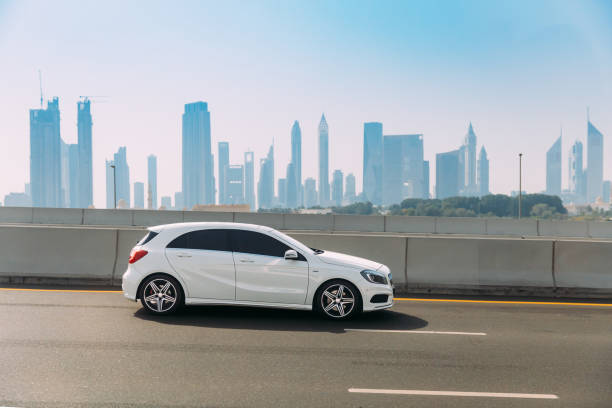India’s Luxury Auto Boom: Mercedes in Focus

Q1. Could you start by giving us a brief overview of your professional background, particularly focusing on your expertise in the industry?
I am the CEO of Titanium Motors, one of South India’s largest and oldest Mercedes-Benz dealerships, leading a team of 200+ automotive professionals in Chennai.
With over 30 years of experience, I have held leadership roles including Group CEO at Chaudhry Group, Nepal’s largest conglomerate, and Head of International Business at Tata Motors. My career spans senior Sales, Marketing, and Product positions across Ashok Leyland, Volkswagen, Honda, Mahindra, Mercedes-Benz, and Lexus.
Q2. How is the demand for luxury vehicles evolving in India—are you seeing growth driven more by first-time luxury buyers or by upgrades from existing customers?
Demand for mobility, particularly luxury vehicles, will continue to experience strong, consistent growth, driven by the overall rise in the economy, increasing living standards, and rising aspirations. The favourable demographics indicate a steady decline in the average age of luxury vehicle buyers, with an increasing number of female buyers entering the segment. Improved highway connectivity enables longer distances to be covered at higher ambient speeds, increasing the need for safer cars—all of which further fuels the trend toward premiumization. While existing luxury car owners remain a significant proportion of buyers, tending to upgrade and add to their fleets, substantial growth is coming from first-time buyers.
Q3. In terms of CAGR, how does the luxury segment compare with the mass-market auto sector in India?
The CAGR for luxury vehicles is expected to remain in the high single digits to low double digits over the next decade, based on current estimates. In comparison, the overall passenger vehicle market is expected to remain approximately 3% lower than the CAGR for luxury vehicles. The recently reduced GST rates are expected to provide an impetus to the passenger vehicle market, potentially leading to a 1–2% increase in the CAGR. Whether these growth rates remain sustained will depend on the presence of multiple "tailwinds," including economic growth, stable fuel prices, robust employment, the introduction of new localized hybrid/EV) models, and improved EV charging infrastructure.
Q4. How do fleet/bulk buyers (corporates, hospitality, HNIs) compare to individual buyers in terms of their contribution to overall luxury car sales?
The demand for luxury vehicles in the fleet and hospitality sectors is still relatively nascent in India, even when compared to other similar economies, and there is significant scope for growth. Currently, the proportion of sales in Tamil Nadu to the fleet and hospitality segment is less than 6%. However, the demand from high-net-worth individuals (HNIs) has been impressive, with notable growth in vehicles priced above Rs. 1 crore (ex-showroom).
Q5. What role do you think digital channels, virtual showrooms, and personalized engagement will play in creating future opportunities?
Today, digital channels are the primary drivers of aspiration, awareness, and informed decision-making. Traditional media is in decline, and luxury car buyers are overwhelmingly digital-first.
Yet, while virtual showrooms have limited traction, physical showrooms remain pivotal. After initially shortlisting options online, buyers prefer to see and test-drive vehicles in person. Luxury car purchases involve both emotional and rational considerations, often influenced by multiple family members across age groups, each with distinct priorities.
The showroom experience, therefore, is decisive. Leading luxury brands orchestrate the journey like a staged narrative, creating escalating "wow moments" that peak at the handover ceremony. For discerning or seasoned customers, personalization is the differentiator that turns consideration into conversion.
Q6. Which players are expanding fastest in Tier-2 and Tier-3 cities, and what makes their approach successful?
India is perhaps the only large market globally that offers assured growth for luxury auto brands over the next few decades. The fastest-expanding brands in Tier-2 and Tier-3 markets are Mercedes-Benz, BMW, and Jaguar Land Rover.
Q7. If you were an investor looking at companies within the space, what critical question would you pose to their senior management?
In India’s luxury vehicle space, the one question every investor must ask is: How can your brand demonstrate a long-term, uncompromising commitment to India and its customers?
The answer lies in the 8Ps: Perpetuity, People, Pace, Price, Product, Positioning, Packaging, Promotion, and Process. Through this lens, Mercedes-Benz clearly outpaces every rival.
Perpetuity:
Mercedes-Benz has been in India for over 30 years—longer than any of its competitors.
People:
Led by an Indian CEO, with senior leadership largely local. Beyond sales and manufacturing in Pune, Mercedes employs 14,000 in its Bangalore R&D hub—among the largest outside Germany.
Pace:
Mercedes responds fastest to market shifts, launching more new and refreshed models each quarter than even the top mass-market players combined.
Price:
Exclusivity, not discounts, drives value. Mercedes enforces minimal discounting through its Retail of the Future (ROTF) model, guaranteeing 50% buyback after three years.
Product:
The widest lineup in India—luxury or mass market—spanning multiple segments and price bands from ₹6 million upwards.
Positioning:
Firmly at the top of the luxury hierarchy. The 3-pointed star commands a clear price premium and universal aspiration—once owned, rarely abandoned.
Packaging:
Ownership is a 360° experience, encompassing service, financing, insurance, buyback, and lifestyle events—nationwide, consistently delivered.
Promotion:
Luxury leadership is built on sustained desire. Mercedes has nurtured this aspiration in India for decades.
Process:
India was the first global market to fully adopt Mercedes’ pioneering ROTF direct-to-customer retail model in 2021, making it a benchmark worldwide.
Conclusion
By every measure of the 8Ps, Mercedes-Benz India demonstrates scale, stability, and unmatched leadership—ensuring its long-term dominance in India’s luxury automotive market.
Comments
No comments yet. Be the first to comment!
